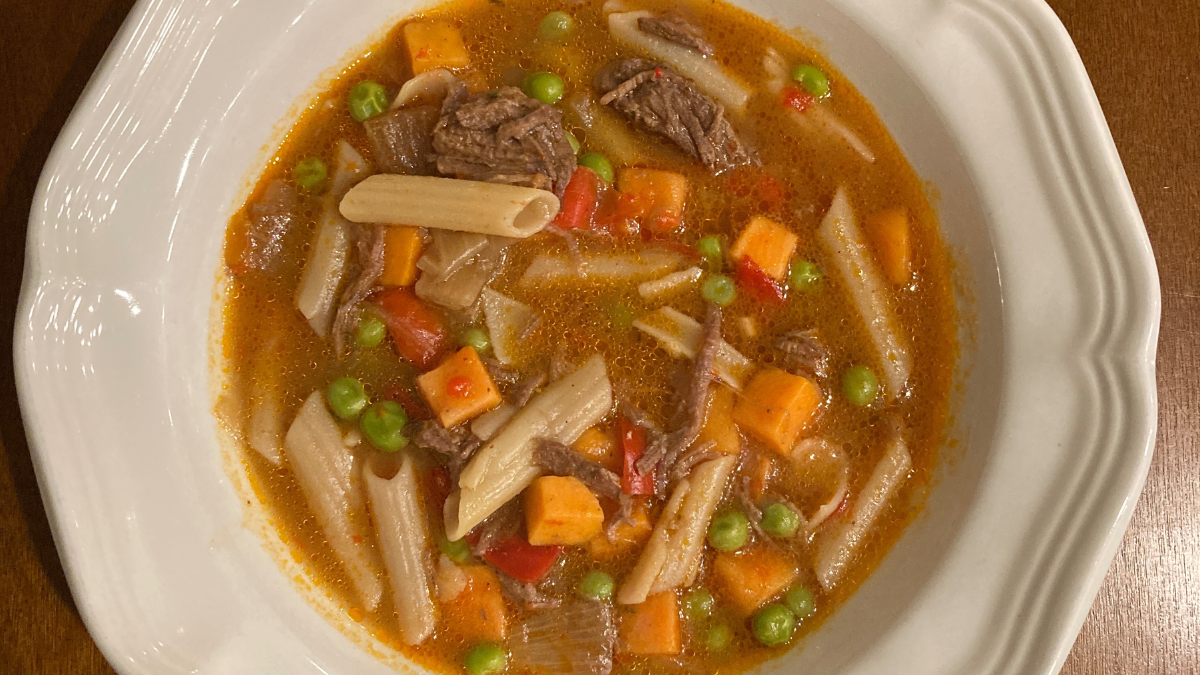It’s been a few months since I’ve posted a recipe here at Spring Forest Farm. While the break from recipe writing has been a nice temporary retreat, I have not taken a break from the kitchen. The family must eat, and I’m always looking for new things to cook or new-to-me variations of old favorites.
Better Health and Budget Friendly Food Goals for 2023
During this break from recipe writing, near the end of last year, I sat down to write out goals for this new year. I’m the type of person that enjoys this annual exercise. As I was taking stock of the state of my life, two issues regarding food rose up as things I’d like to focus on in 2023.
First, I decided that my grocery buying habits had slid too far into convenience foods. While my family’s diet is miles healthier than it was seven years ago, convenience food is still processed, even if organic and GMO free. We can do better. Second, inflation’s influence on our grocery budget was beginning to impact my family’s ability to put money into savings each month. (We’re saving for a car and want to be as aggressive as possible.) I set a goal for 2023 to reign in our out-of-control grocery budget. We perhaps still spend more than the average American family, but my goal is to quit spilling over our chosen amount for each month. This takes both planning and discipline.
A Plan to Achieve Food Goals
In order to be successful with these two goals, I made a few changes. First, in a notebook, I recorded the website and title of every meal I might put into a weekly menu. I add to this list as I find or develop new recipes that my family likes. We eat a pretty varied menu each month. There are probably 70-80 recipes on this list right now. Second, I’ve pledged to write a grocery list each week and stick to it. By planning meals ahead of time, I know exactly what I’ll need in the kitchen that week. I think that most of my convenience food purchases in 2022 were impulse buys. By sticking to a list, I avoid those weak moments in the store. I can compensate at home by preparing more homemade snacks.


One more thing regarding our grocery budget…I really prefer to cook with fresh vegetables and herbs. I think, for me, it’s a texture preference. However, as part of keeping to a reasonable grocery budget, I’ve made a goal to incorporate more frozen vegetables into our meals. I think the best way to do this is through soups. After cooking vegetables in a soup, you can’t really tell the difference between fresh or frozen. I’ve also started growing fresh herbs at home. My most commonly used herbs are parsley, cilantro, and thyme, so these are what I started with. I also plan to add mint, rosemary, and tarragon this summer.
Recipe Notes
The following recipe is one that I made with these new principles in mind. With the exception of fresh onions, peppers, garlic, and herbs, everything else came from my freezer or pantry.
Anytime I use a beef roast, I plan to slow cook that cut of meat for at least three hours. I like beef roast to be fall-apart tender. If you cook at too high of heat or too fast, the meat will be tough and chewy. I also have learned to sear a beef roast before putting it into the oven. This locks in the natural flavor and helps to secure the texture I’m trying to achieve.



When cooking with frozen vegetables, you save all of those ingredients for the final hour of cook time. Anything added too early will cook down to mush. Choose vegetables that you like. When I made this soup, I had frozen sweet potatoes and frozen peas available in my freezer. Green beans, corn, carrots, and white potatoes would all be good options.

Fresh vegetables and herbs can go into the Dutch Oven and cook for hours. Frozen vegetables should only be used in the last hour of cooking.
I chose to add some gluten free noodles to this soup. After cooking the soup in the oven, I put the pot on the stove and cooked the noodles directly in the soup. Even though I turned off the heat when the noodles were still a bit stiff, they continued to cook and absorbed much of the soup’s liquid. If you prefer that your noodles be more firm, I would cook them in a separate pot, drain, and cool them completely before adding them to the soup. Both methods work, but achieve a different texture upon completion.

I chose to cook the noodles directly in the Dutch oven. Just keep in mind, they will continue to cook even after you remove the pot from heat. They will also absorb much of the beef stock. You may find that you need to add more stock before serving.
As always, enjoy the recipe and make it your own!
Beef Noodle Soup

Ingredients
– dutch oven
– 2-3 lb beef roast (I used a pike’s peak, but any cut will work)
– 1 tbsp sea salt
– 1-2 tsp white pepper
– 2 tbsp olive oil
– 3-4 garlic cloves, crushed
– 2 oz tomato paste
– 2 tbsp balsamic vinegar
– 2 onions, chopped
– 1 sweet pepper, chopped
– 8-10 cups beef stock
– fresh thyme
– frozen vegetables of your choice (I used sweet potatoes and peas)
– 4 oz. noodles (If using gluten free noodles, I recommend red lentil noodles)
Directions
1. Heat the oven to 275 degrees. Lower the rack to accommodate your Dutch Oven.
2. Cut the beef roast into 5-6 pieces. (This speeds cooking time.) Liberally salt and pepper all sides.
3. Heat the Dutch Oven over medium heat on the stove top. When the pot is hot, add the oil.
4. Sear the pieces of beef roast, browning all sides. This will take 3-5 minutes.
5. When browned, but not cooked through, remove the beef roast from the pot temporarily. To the hot pot, add the garlic, tomato paste, and balsamic vinegar. Stir to combine. If this begins to burn to the bottom of the pan, add a bit of beef stock to thin it out.
6. When the garlic is fragrant and the mixture is well combined, add the beef back into the pot. Place the onions, peppers, and fresh thyme on top of the beef and pour in all of the beef stock. Stir to combine.
7. Put a lid on the pot and place it in the 275 degree oven for 2 1/2 – 3 hours.
8. When the beef roast is fall-apart-tender, remove it from the pot, shred the beef, and return it to the soup. Add your frozen vegetables, cover, and return the pot to the oven for another 45 minutes to an hour.
9. If you’d like to include the noodles in your soup, you have two options: 1.) You can remove the pot from the oven and place it on a burner over low heat. With the lid removed, you can add noodles directly to the Dutch Oven. Cook and removed the pot from heat when the noodles begin to soften. They will continue to cook a bit, absorbing liquid from the soup. 2.) If you like your noodles to be more firm, cook them separately. Drain and cool completely before adding them to your Dutch Oven. (The pictures show the results of the first method.)

Here on SpringForestFarm.com, Jennifer Taylor Schmidt writes beef recipes for the busy, natural homemaker. It is possible to seek optimal health with limited time and money. Join Jennifer in future posts as she explores the possibilities found in a 1/4 and a 1/2 beeve. You can also find her thoughts and personal health journey on RealFoodRealHealing.com.

One thought on “Eating Well Made Easy: Beef Noodle Soup”